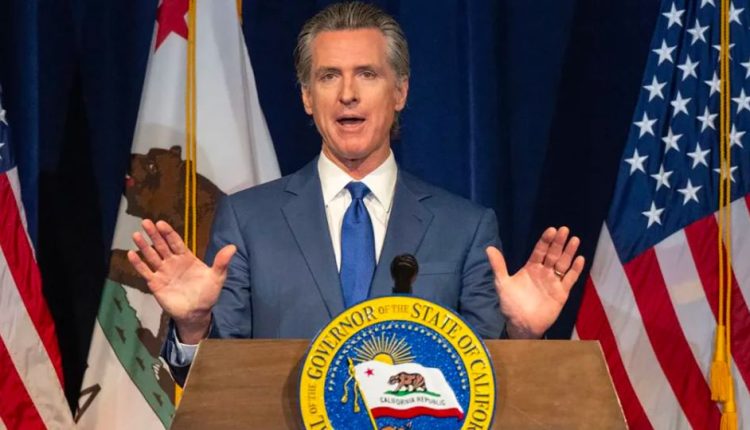Legislature’s Analyst Offers Evaluation of Newsom Budget
The nonpartisan analyst’s office representing the Legislature stated on Saturday that Gov. Gavin Newsom’s plan to address the state’s multi-billion dollar budget deficit has both strengths and weaknesses. They also noted that while his revenue projections are plausible, they may be overly optimistic.
The size of the budget deficit is a topic of discussion. Governor Newsom estimates it to be $38 billion, but according to the analyst’s office, Newsom’s calculations indicate a larger shortfall of $58 billion for the upcoming 2024-25 fiscal year, commencing on July 1.
In a concerning development, both the governor and Legislative Analyst’s Office have projected significant deficits of approximately $30 billion per year until 2027-28. According to the analyst’s office, California’s current reserves and spending plans have not impacted the state’s core social and public services. However, they warn that future deficits may necessitate tougher choices, such as ongoing spending cuts and revenue increases. This assessment comes from the initial review of Governor Newsom’s $291.5 billion spending plan.
During his budget press conference on Wednesday, Newsom expressed his reluctance to increase taxes on the super wealthy, dismissing the suggestion. There is a division among his fellow Democrats in the Legislature. A lawmaker with progressive views attempted once more to push for the implementation of a wealth tax specifically targeting Californians who possess a minimum of $50 million in net assets. However, the proposal was ultimately set aside by the chairperson of the committee.
A spokesperson for Newsom responded to the analyst’s report on Saturday, stating that it presents one perspective on California’s budget shortfall and revenue projections.
“The state can produce a prudent, balanced budget that preserves key investments for education, public safety, addressing homelessness, mental health care reform, climate action, and other priorities without a ‘wealth tax’ or any other broad-based revenue increases,” stated Brandon Richards, the spokesperson.
The Legislative Analyst’s Office is concerned about a disagreement with Newsom regarding the potential increase in tax revenue that the state can collect. State tax collections experienced a significant decline of 20% during the last fiscal year. Governor Newsom’s proposed budget for 2024-25 includes a projected 8% increase for the current budget year of 2023-24. “At the midpoint of the current year, there are still no clear indications of a rebound,” stated the analyst’s office. The stock market is currently showing signs of recovery, which is crucial for state revenues. However, it is important to note that the market can change direction just as rapidly.
Also Read: 13 Alleged Members of Organized Burglary Ring into Custody
According to the analyst’s office, it is justified for Newsom to withdraw $13 billion from the state’s reserves. California’s rainy day fund currently holds around $11 billion, a significant amount of cash set aside for future years due to the anticipated budget problems, according to the office. In order for Newsom to access the rainy day fund, he would need to declare a “budget emergency,” a step that the analyst’s office believes would be justified.

According to the office, Newsom’s decision to withdraw $900 million from another reserve account may not align with the intentions of the legislature. A fund has been established to provide support for health insurance and cash aid programs aimed at assisting low-income residents. According to the office, it is believed that the current economic conditions do not align with the original intentions of the Legislature when establishing the reserve.
The office suggests that Newsom and the Legislature consider implementing further reductions to current short-term programs that do not align with the state’s primary, ongoing educational or social service obligations. In order to have more emergency cash on hand for future deficits, it may be necessary to reduce the amount of money taken from reserves.
The ongoing budget process, which typically extends from June to September, is characterized by a flurry of conflicting assessments and initial predictions. The analyst’s office, which serves as the state’s primary oversight for the governor’s state-spending calculations, intends to conduct several comprehensive evaluations of Newsom’s plan. Meanwhile, legislative budget committees are set to hold numerous public hearings to assess the governor’s proposals.
Governor Newsom is set to unveil an updated version of his 2024-25 spending plan in May. This revision comes after a thorough analysis of the state’s tax collection in April, which will provide a clearer picture of the expected revenue. In early June, lawmakers are expected to propose their own budget for the 2024-25 fiscal year. This will kickstart a period of intense negotiations between Governor Newsom and the Legislature, with the aim of finalizing a budget plan by approximately June 27.
Legislative Republicans have voiced their criticism of Newsom’s plan, claiming it relies on gimmicks and accounting tricks. Sen. Roger Niello, vice chairperson of the Senate budget committee, expressed his confidence in a recent analysis on social media, stating that he finds it more reliable than the Governor’s proposal.
The leaders of the Democratic supermajority, capable of passing a budget without any Republican votes, have shown overall support for the Democratic governor’s proposals.
(Source: bakersfield)
